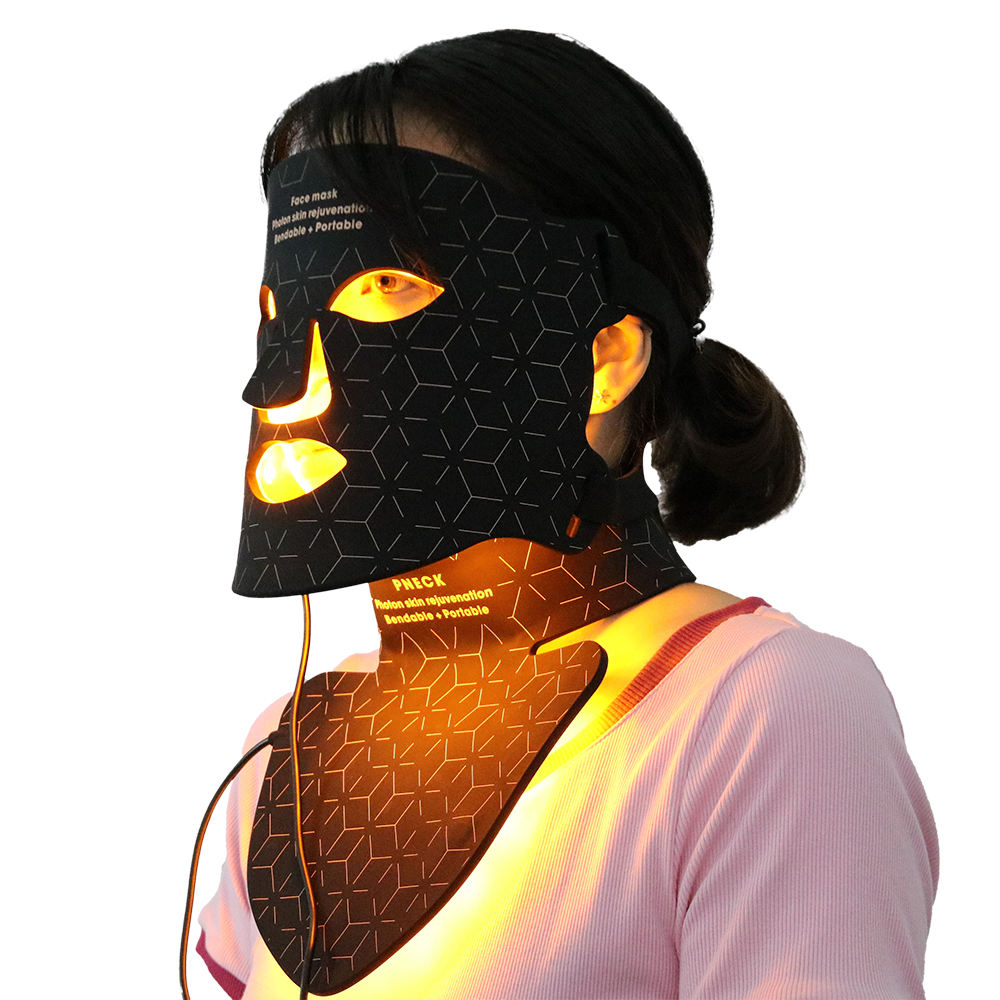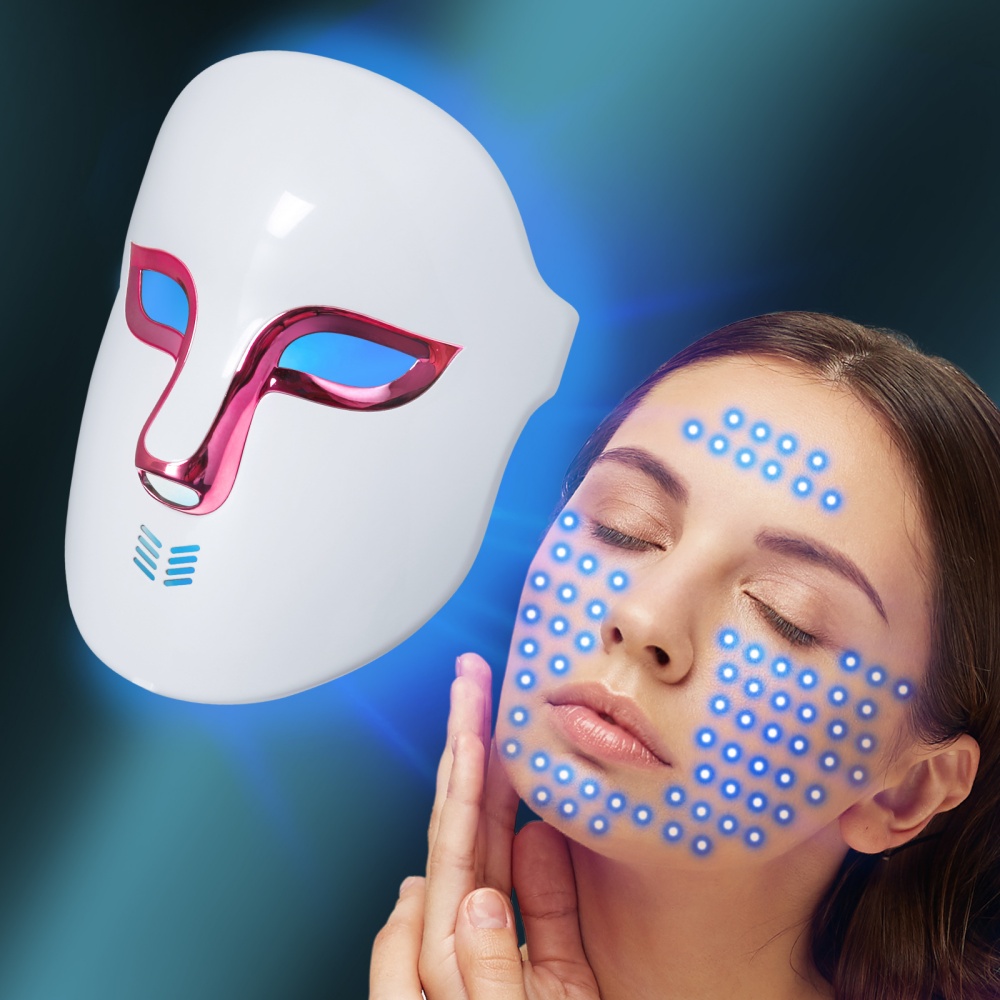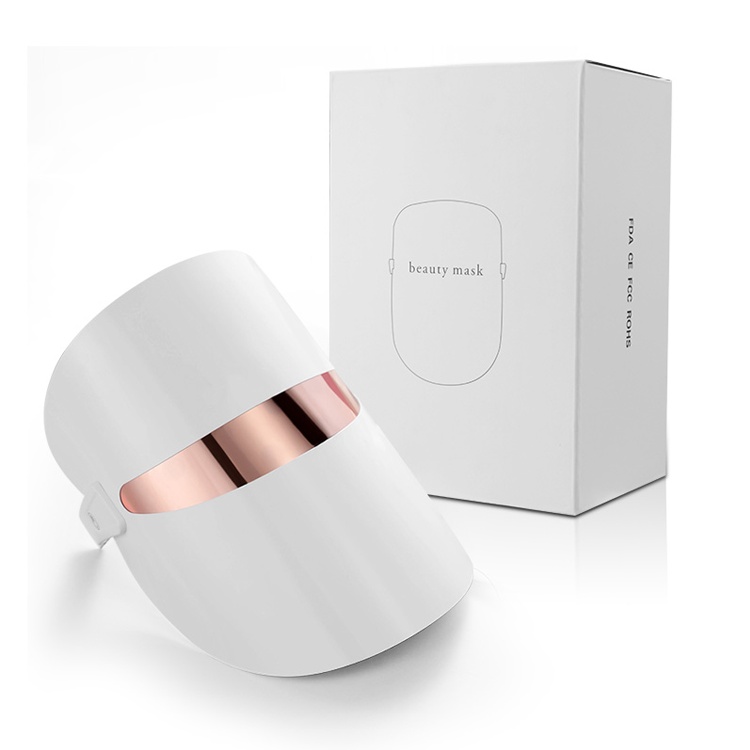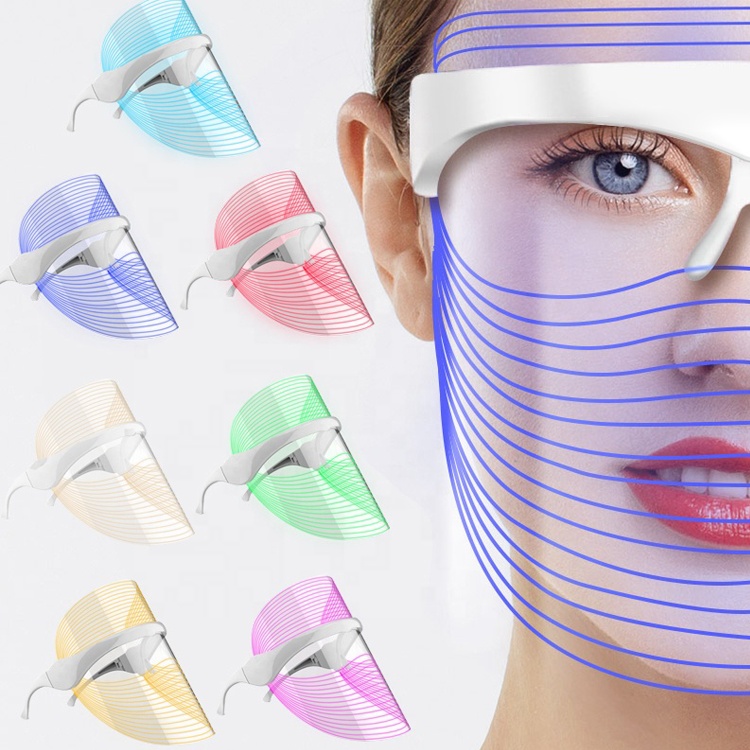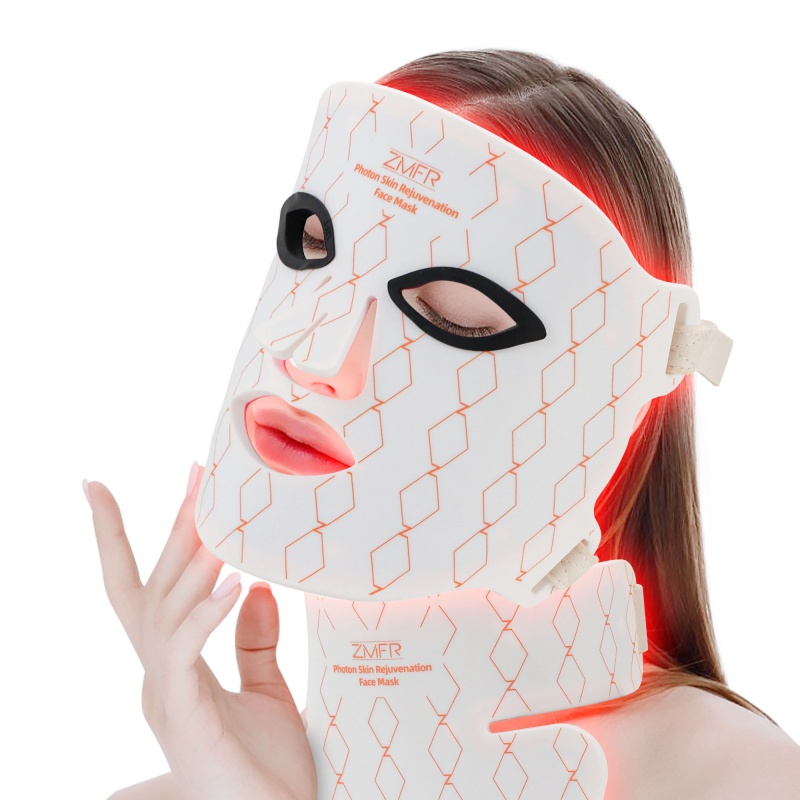7 LED colours explained-benefits and skin conditions
Summary
LED light therapy is an innovative treatment modality that employs various wavelengths of light to address a range of skin conditions and enhance overall skin health. Different colors of LED light—most notably red, blue, yellow, and near-infrared—each possess unique properties that target specific skin issues. For instance, blue light is primarily used for its antibacterial effects against acne, while red light promotes collagen production and reduces inflammation, making it a popular choice for anti-aging treatments.
The versatility and non-invasive nature of LED therapy have contributed to its growing popularity in both professional dermatological practices and at-home skincare routines. The significance of LED light therapy lies not only in its broad application for conditions such as acne, rosacea, and photoaging but also in its scientifically-backed mechanisms of action, including the stimulation of cellular processes through photobiomodulation.
By enhancing mitochondrial function, LED therapy facilitates increased adenosine triphosphate (ATP) production, thereby improving skin rejuvenation and healing processes. However, the treatment is not without its controversies; while many users report positive results, the scientific community continues to debate the efficacy of certain wavelengths and the need for further research to substantiate their claimed benefits.
Safety is another critical aspect of LED light therapy, as it is generally regarded as safe with minimal side effects. However, concerns regarding potential eye damage from improper use, as well as adverse reactions in individuals with specific skin conditions, necessitate caution and appropriate protective measures during treatment. As the field of LED therapy evolves, ongoing research aims to clarify its effectiveness for various applications and establish comprehensive guidelines for safe and optimal usage. In conclusion, LED light therapy represents a fusion of ancient healing traditions and modern scientific advancements, offering a range of benefits for skin health. As more practitioners and patients recognize its potential, this therapy continues to pave the way for innovative approaches in skincare and dermatology, making it a notable topic in contemporary discussions about non-invasive treatments.
Types of LED Colors
LED light therapy utilizes various colors of light to target specific skin and health conditions, each with unique properties and effects on the skin. The most commonly used colors in LED therapy are blue, red, and yellow, along with near-infrared light, each serving distinct therapeutic purposes.
Near-Infrared Light
Near-infrared light, also known as monochromatic infrared energy (MIRE), is believed to enhance circulation and promote wound healing by inducing the release of nitric oxide and growth factors. This type of LED therapy aids in deeper tissue repair and is particularly useful in post-surgical recovery and skin rejuvenation treatments.
Blue Light
Blue LED light primarily targets acne by reducing the presence of Propionibacterium acnes, the bacteria responsible for acne breakouts. It has also been shown to decrease the activity of sebaceous glands, which may lead to fewer breakouts and improved skin clarity. Studies indicate that blue light can penetrate up to one millimeter beneath the skin surface, making it effective for treating surface-level skin issues, including redness and lesions associated with acne vulgaris and psoriasis.
Red Light
Red LED light is known for its deep penetration, reaching the dermal layer of the skin. It plays a significant role in reducing inflammation, promoting collagen production, and enhancing wound healing. This color therapy has been found beneficial in post-operative recovery, showing faster healing rates in patients following eyelid lift procedures. Additionally, red light is commonly used in anti-aging treatments due to its ability to stimulate fibroblasts and improve skin texture, contributing to a more youthful appearance.
Yellow Light
Yellow or amber LED light therapy is often employed for treating photoaging and post-laser treatment effects. It penetrates the skin between 0.5 and 2 millimeters and is particularly effective in reducing redness and erythema following skin resurfacing procedures. Patients have reported improvements in fine lines and overall skin tone after receiving yellow LED treatments. This color is also used in combination with other treatments, such as laser hair removal, to mitigate side effects like redness.
Combination Therapy
Combining different LED colors in therapy can enhance overall treatment efficacy. For instance, using blue light to address acne while simultaneously employing red light for its anti-aging benefits can yield comprehensive results. This combination approach is becoming increasingly popular as more practitioners and patients recognize the advantages of tailored LED treatments.
Mechanism of Action
Red light therapy (RLT) operates on the principle of photobiomodulation, which involves the use of specific wavelengths of light to stimulate biological processes in the skin and underlying tissues. The primary mechanism is based on the absorption of light by mitochondria, the energy-producing organelles within cells. When exposed to low-wavelength red light, these mitochondria can enhance their production of adenosine triphosphate (ATP), which is essential for cellular energy and function.
Cellular Response
The increased ATP production enables skin cells to perform their functions more efficiently, including repairing damage, promoting new cell growth, and enhancing skin rejuvenation. This is particularly beneficial for conditions such as scarring, fine lines, and signs of aging. The light is absorbed by specific chromophores in the skin, triggering a series of photophysical and photochemical events that stimulate various cellular processes, including fibroblast proliferation and collagen synthesis.
Treatment Applications
RLT has been utilized to treat a variety of skin conditions, with proponents suggesting that it can improve overall skin health by increasing the efficacy of the skin's natural healing processes. Clinical applications have included the treatment of acne, psoriasis, and photoaged skin, benefiting from the non-invasive nature of the therapy. Additionally, the photodynamic therapy (PDT) approach combines light exposure with photosensitizers to enhance the treatment of pre-cancerous and cancerous lesions, leveraging the cytotoxic effects of activated photosensitizers under specific light wavelengths.
Safety and Side Effects
LED light therapy is generally considered safe, with minimal to no side effects reported in most cases. Common side effects, when they do occur, are typically mild and may include temporary pain or irritated skin, such as redness, inflammation, rashes, or hives. In a review of existing literature, side effects were either mild or not reported at all, although one patient experienced post-treatment erythema that lasted for 24 hours, which was not severe enough to prevent subsequent treatments without complications. While adverse effects are rare, there are some potential acute and long-term consequences, such as skin erythema, xerosis (dry skin), pruritus (itching), blistering, altered pigmentation, and photoaging. It's important for individuals with certain conditions to take precautions before undergoing treatment. For instance, people with photosensitive dermatoses, a history of skin cancer, or those taking photosensitizing medications should avoid LED therapy, as these factors can increase the risk of adverse reactions. Additionally, concerns have been raised regarding potential eye damage due to improper use of LED lamps, particularly in chromotherapy. Although LED lamps are classified as low risk, they should not be placed too close to the eyes, as this can lead to an increased risk of retinal damage. Proper precautions, including the use of protective eyewear, should be followed to mitigate these risks. As with any skin treatment, it is essential for users to adhere to aftercare advice, such as wearing broad-spectrum sunscreen and allowing any applied serums to absorb fully after treatment. Pregnant women, individuals with epilepsy, and those with certain thyroid conditions should consult a healthcare professional prior to starting LED light therapy treatments to ensure safety.
Applications in Skincare
LED light therapy has emerged as a popular treatment option in skincare, offering various applications that cater to a range of skin concerns. Different wavelengths of light, including red, blue, green, and yellow, target specific issues, making LED therapy a versatile addition to both professional treatments and at-home skincare routines.
Red Light Therapy (RLT)
Red light therapy (RLT) is widely promoted for its potential to improve skin texture and reduce signs of aging, such as fine lines and wrinkles. It is believed to stimulate collagen production, thereby enhancing skin elasticity and promoting healing. While many users report positive outcomes, experts note that the efficacy of RLT for all its claimed uses is still under investigation, emphasizing the need for further studies to substantiate its benefits for various skin conditions.
Blue Light Therapy
Blue light therapy is particularly effective for treating acne by targeting the bacteria that contribute to breakouts. This wavelength penetrates the skin to kill acne-causing bacteria, thereby reducing inflammation and the occurrence of new blemishes. Studies have demonstrated its ability to clear existing acne and prevent future outbreaks, making it a favored choice among dermatologists for acne management.
Green Light Therapy
Green light therapy is primarily associated with reducing pigmentation issues, such as sunspots and uneven skin tone. It works by targeting melanin production, leading to a more even complexion and decreased hyperpigmentation over time. This makes it an appealing option for individuals looking to address discoloration without invasive procedures.
Yellow Light Therapy
Yellow light therapy is used to improve skin texture and enhance hydration. It is known to increase blood circulation, promoting a healthy glow and reducing redness associated with skin conditions such as rosacea. This therapy is often utilized in conjunction with other treatments to maximize skin health and appearance.
Other Potential Uses
In addition to the established uses for red, blue, green, and yellow light, researchers are exploring other applications of LED therapy. For example, treatments involving near-infrared light are being investigated for their potential benefits in wound healing and reducing inflammation. However, many claims regarding these therapies, such as their effectiveness for weight loss or mental health conditions, lack substantial scientific backing.
At-Home vs. Professional Treatments
While at-home LED devices are widely available, there is a notable difference in the efficacy and power of these devices compared to those used in professional settings. Home devices typically deliver less intensity and may not be as effective for comprehensive treatment across larger areas of the skin. It is advised that individuals consult with a dermatologist to determine the most suitable treatment plan, which may include a combination of professional and at-home therapies for optimal results.
Historical Context
The therapeutic use of light has deep roots in various ancient civilizations, where both sunlight and color were believed to possess healing properties. The practice of chromotherapy, which involves the use of colors for healing, can be traced back to ancient Egypt, where temples were constructed to harness sunlight through colored glass for therapeutic purposes. This belief in color's impact on health was also evident in ancient Greece, where philosophers like Aristotle and Hippocrates noted the connections between colors and bodily ailments, developing theories that related specific colors to various elements and health conditions. In the 19th century, the scientific exploration of light therapy gained momentum, particularly with the works of pioneers such as Robert Hunt, who documented the effects of sunlight on plant growth in his 1844 publication, Researches on Light. This research inspired Augustus Pleasonton, who published The Influence of the Blue Ray of the Sunlight and of the Blue Color of the Sky in 1876, advocating that blue light could promote the growth of crops and aid in healing human diseases. This marked the beginning of modern chromotherapy, influencing contemporaries like Dr. Seth Pancoast and Edwin Dwight Babbitt, who further explored the medicinal use of light in their respective works. The advent of LED (light-emitting diode) therapy in the late 20th century brought a new dimension to light therapy. NASA initially pioneered the use of LED technology for plant growth in space in the 1990s, later adapting it for wound healing applications. This transition laid the groundwork for LED therapy's integration into dermatology, leading to its widespread adoption for treating various skin conditions, including acne and signs of aging. Throughout history, light therapy has evolved, supported by both traditional practices and modern scientific research, highlighting the enduring belief in the power of light and color as therapeutic agents. Today, LED therapy continues to be a non-invasive treatment option, demonstrating the lasting impact of these ancient principles on contemporary health and wellness practices.
 English
English Español
Español Português
Português Pусский
Pусский Français
Français Deutsch
Deutsch 日本語
日本語 한국어
한국어 Italiano
Italiano عربى
عربى
